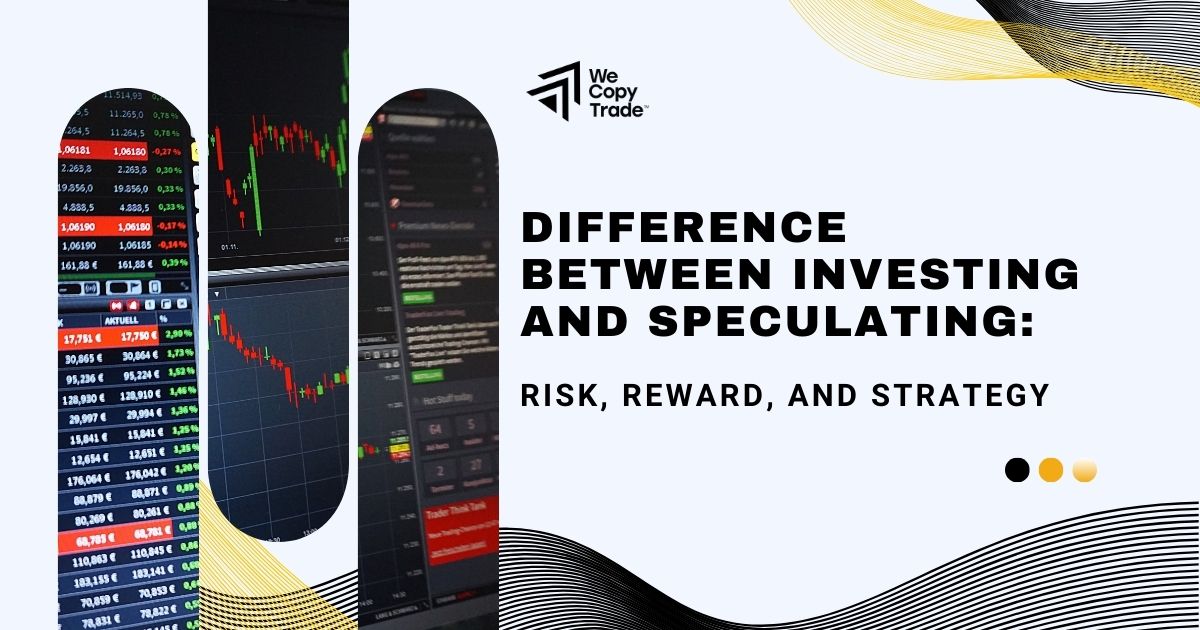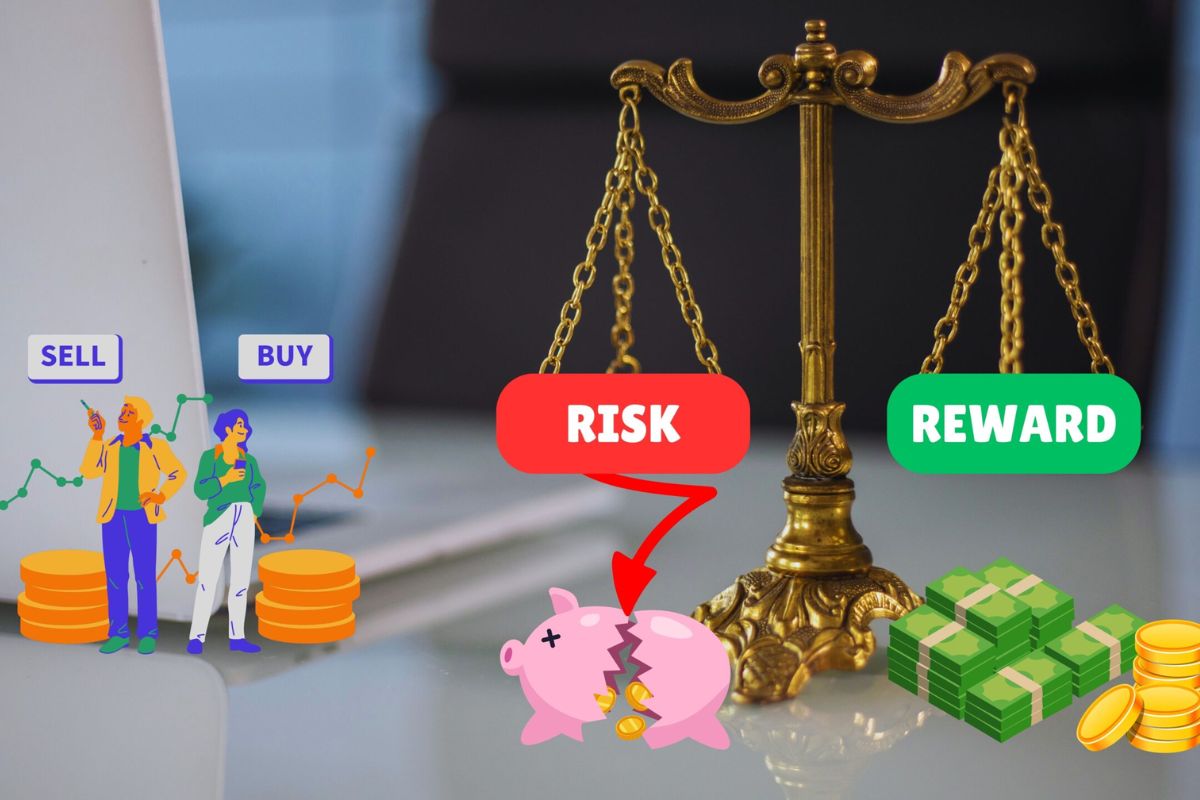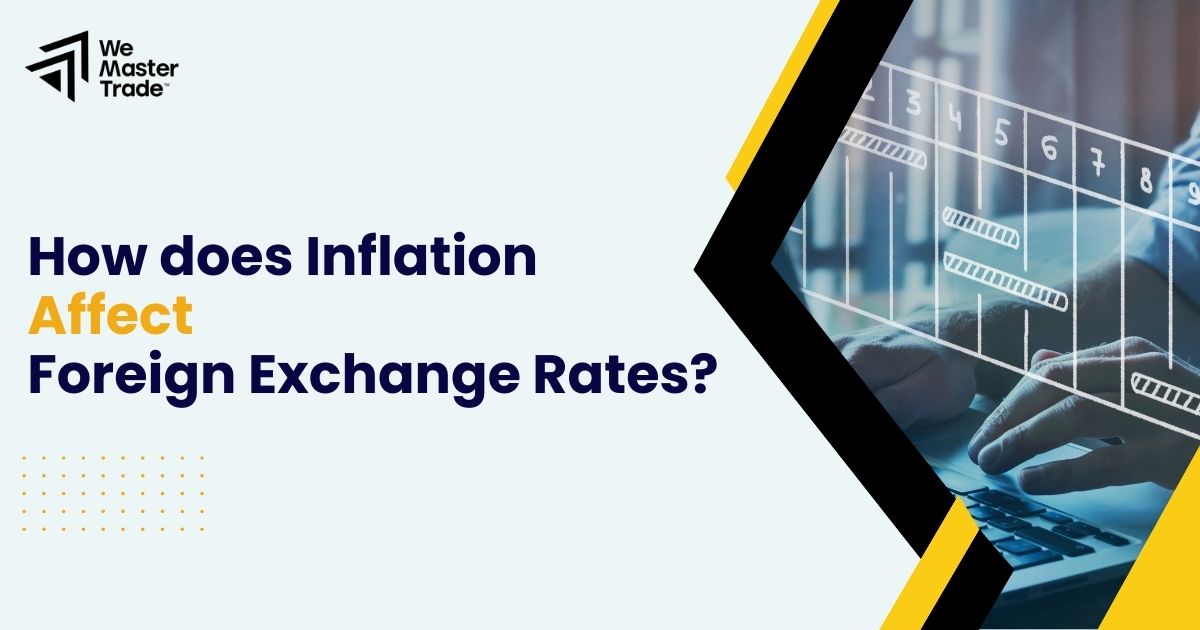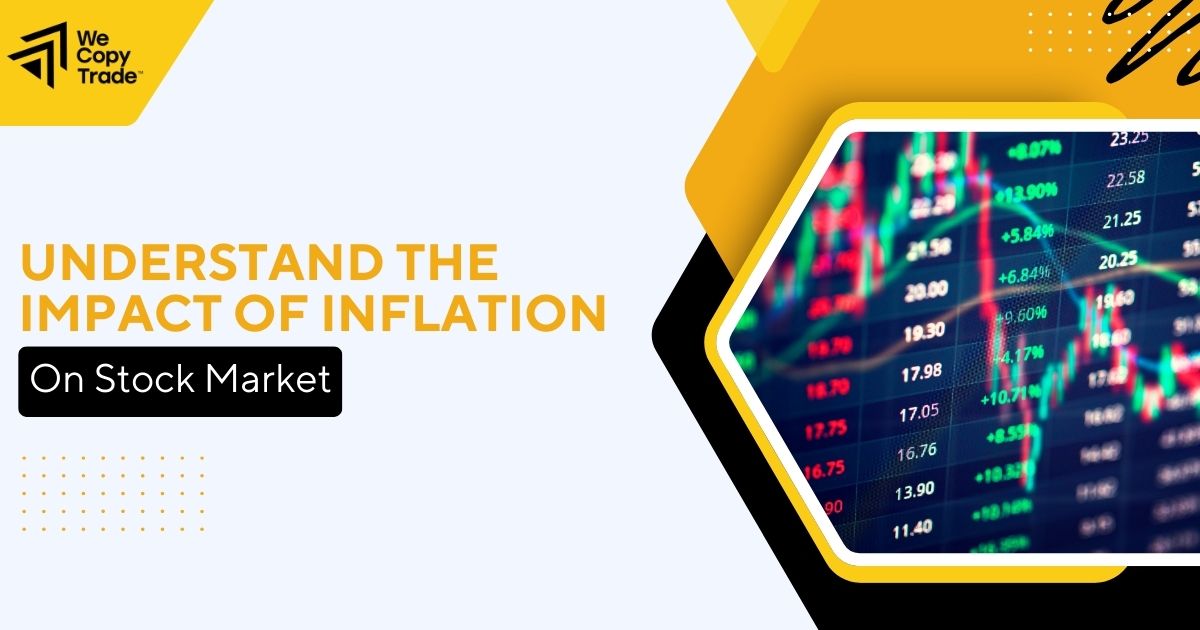
Anyone trying to increase their money must first comprehend the subtle but important distinctions between investing and speculating. Although both investing and speculating are methods to engage in the financial markets, their objectives, risk profiles, and strategic approaches are somewhat different. While speculating seeks fast, sometimes erratic rewards by assuming more degrees of risk, investing concentrates on long-term development and wealth building. This article explores these two financial techniques for your particular use extensively.
Basic Concepts
Here are the difference in basic concepts between investing and speculating:
Investing: An Ongoing Commitment
Investing is a methodical process with a long-term wealth development concentration. Based on meticulous fundamental research and economic data, investors distribute their money into many assets: stocks, bonds, mutual funds, real estate, and others. Using compounding and reinvestment will help to create consistent results.
Many great investors follow the idea of purchasing solid assets at a fair price and keeping them for years, if not decades, to profit from slow but steady increase. Usually involving extensive study and a strong knowledge of market basics, investing helps people to build diversified portfolios able to withstand market volatility.
Speculating: Betting on the Short-Term
Conversely, speculating is distinguished from underlying economic value by emphasizing transient price swings instead. By making transactions that could pay off quickly, speculators hope to benefit from momentum changes, market inefficiencies, or even rumors.
Speculation generally depends on technical analysis, chart patterns, and market mood unlike investment. The time horizon is the main difference: speculators work on days, hours, or even minutes whereas investors see years and decades. Although this strategy often results in large profits, it also exposes the speculator to quick and severe losses should the market turn against their holdings.
Risk Differences

Here are the difference in risk between investing and speculating:
Lower Risk in Investing
One of the distinguishing features of conventional investing is its focus on risk management. Investors often look for assets with a proven track record, excellent fundamentals, and the potential for long-term growth. By diversifying their portfolios and completing thorough research, investors reduce their exposure to any particular risk factor. They prefer to invest in established firms with consistent profits and dividends, which naturally decreases volatility.
Furthermore, long-term investments benefit from compounding, which means that even if the market has a short-term slump, a well-chosen portfolio will most likely recover and increase over time. Investing requires patience, which reduces the possibility of panic selling during market dips.
Higher Risk in Speculating
The risk profile of speculation is much higher. Usually engaged in highly leveraged trades or based on market rumors, speculators expect speedy profits. Leverage may increase advantages but also quadruple losses, therefore greatly boosting the stakes.
Speculators in volatile markets such currencies, commodities, and startups in developing technologies trade where price swings may be unexpected and strong. This high-risk character suggests that the danger of great loss is constantly there even if the possibility for profit is very great. It is important to understand and accept the inherent risks as without strict risk management speculators may quickly run out of their capital.
Reward Differences

Here are the difference in reward between investing and speculating:
Steady Returns and Compounding in Investing
Investing is often linked with steady and predictable results. Investors should anticipate their portfolios to increase gradually if they concentrate on firms and assets with a solid track record. Combining dividend income, reinvestment, and the natural asset growth over time usually results in this stability.
A key incentive in investing is the compounding principle: when gains are reinvested, they generate greater returns, therefore producing a snowball effect that may greatly increase wealth over time. Stability is usually preferred by investors above very high short-term returns; so, they choose assets that provide steady performance even in erratic economic times.
Rapid Gains and Volatility in Speculating
In contrast, speculation is centered on making rapid and perhaps explosive profits. The earnings might be really large when a speculator correctly detects a transitory opportunity or predicts changes in the market. But this promise is accompanied by a great degree of instability. Quick reversal of gains might also follow from fast market swings that would benefit a speculator.
Although the prospect of earning a lot of money quickly is appealing, the danger of experiencing significant losses balances it. Since speculative gains are unsustainable, success in this area is usually transient and mostly dependent on market timing and risk management under pressure.
Strategies and Approaches

Here are the difference in strategies and approaches between investing and speculating:
Fundamental Strategies for Investing
Fundamental research—which determines the underlying value of an asset using financial statements, industry conditions, and more general economic trends—is often relied upon by investors. This approach helps investors find underpriced companies with interesting future development potential. A varied portfolio including stocks, bonds, real estate, and other assets helps to offset market volatility.
Value investing—which concentrates on purchasing assets at a discount to their actual worth—and dividend investment—which searches for companies that habitually pay a portion of their earnings to shareholders—are other prevalent strategies. By building a portfolio based on strong financial analysis and variety, investors hope to reduce risk and produce steady gain over time.
Technical Strategies in Speculating
However, speculators make their selections mostly based on technical analysis. This method relies on analyzing price charts, finding patterns, and using statistical methods to forecast short-term market moves. Speculators often use indicators like moving averages, the Relative Strength Index (RSI), and Bollinger Bands to timing their entry and exits.
In addition, speculators often use leverage and short-selling possibilities to enhance their prospective profits. The fast-paced nature of speculating necessitates a strong eye for market trends and a readiness to respond swiftly to changing market circumstances. This emphasis on technical patterns rather than inherent worth necessitates a high level of discipline and continual monitoring of market circumstances.
Difference between Investing and Speculating: Tips for Successful Strategies
Successful financial plans demand a personalized strategy for both investors and speculators. Each organization must combine diligent research with excellent risk management to ensure long-term success.

For Investors
- Long-term development and patience: Investing requires a dedication to long-term success as well as the patience to wait for high-quality chances. This strategy stresses rigorous study while avoiding the temptation to seek rapid, short-term rewards.
- Asset vetting: Before adding an asset to your portfolio, you should properly vet it for its long-term potential. This thorough review ensures that only solid investments contribute to long-term wealth building.
- Diversification: It is essential for decreasing overall risk in your portfolio. Spreading investments across industries and asset classes reduces the effect of a single loss and results in a more balanced approach.
- Managing market volatility: Staying cool during market downturns is critical for keeping a long-term outlook. Recognizing that volatility is a normal component of the investing process allows investors to make reasonable choices rather than succumb to fear.
- Compounding benefits: Consistent compounding and stable quality assets may considerably grow your portfolio over time. Consistent reinvestment of profits helps to develop a strong wealth basis that increases even in volatile markets.
For Speculators
- Expanding knowledge: Following successful traders can provide valuable insights and strategies for profitable trading. Platforms like WeCopyTrade allow speculators to copy trades from seasoned professionals, optimizing profits while learning from the best in the field.
- Real-time data and technical indicators: Speculators use real-time data and technical indicators to make educated trading choices. This strategy enables them to schedule market entrances accurately and capitalize on short-term opportunities as they emerge.
- Trend tracking: Accurate trend monitoring is crucial for finding the best times to enter and exit transactions. By attentively watching market fluctuations, speculators may respond swiftly and profit on momentum swings.
- Risk controls: Strict risk controls are required to reduce possible losses in speculative trading. Setting stop-loss orders and properly sizing holdings helps to mitigate the significant risks associated with quick trading.
- Cautious use of leverage: To avoid increased losses, leverage should be used with caution. Responsible capital management guarantees that even if transactions do not go as intended, the speculator’s overall financial health is preserved.
- Discipline and quick decision making: Discipline and swift decision-making are essential components of a successful speculation strategy. These characteristics, along with rigorous risk management, enable speculators to successfully traverse a fast-paced market environment.
Conclusion
Whether you want to invest or speculate, success is dependent on recognizing your risk tolerance and implementing the appropriate methods. Each strategy has unique potential, but also presents various obstacles that must be carefully considered. By connecting your financial objectives with the proper strategy, you can manage market volatility more confidently. Finally, a well-executed plan will pave the road for long-term financial success.Check out more our latest market news and join our trading program at: https://wemastertrade-mena.com/











